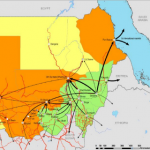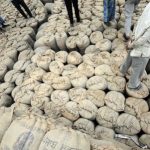This paper evaluates spatial market and price transmission in cereal markets in Sudan, focusing on wheat and sorghum, two major cereal crops. We use comprehensive and long-ranging monthly cereal price data and a multivariate vector of error-correction cointegration models (VECM) to characterize both short-term and long-term price transmissions across local cereal markets
The Links Between Food-Related Trade and Fiscal Policies and Obesity Rates in Low- and Middle-Income Countries
Global overweight and obesity rates have almost tripled since 1975 and are expected to continue rising over the next few decades (Shekar & Popkin, 2020). This trend is alarmingly steeper in low- and middle-income countries (LMICs) compared to high-income countries, where the same rates are gradually declining (Ng et al., 2014, Shekar and Popkin, 2020)
NEW PUBLICATION: Cluster-Based Development in Egypt: A Study of External Shocks to the Leather and Medicinal and Aromatic Plant Sectors
The Egyptian government has prioritized the idea of cluster-based development-that is, the geographic concentration of specialized firms, such as in this case, those producing similar or related products. The establishment of such clusters, however, presents significant challenges, bottlenecks, and obstacles
NEW PUBLICATION: A study of Tunisia’s Leather and Date Sectors
Based on field visits, structured interviews, and reviews of the literature and secondary data, we examine major challenges facing the leather and date clusters in Tunisia. The challenges vary greatly between the clusters. The leather and footwear industry faces a decline in external demand
التحويلات النقدية و قدرة المرأه على اتخاذ القرار فى مصر
.كتابة: هدى الانبابى و دانيال اوجيليجان و نورين كاراشيوالا و يمنى قاسم و سيكاندرا كوردى اصبحت التحويلات النقدية احد اكثر الطرق انتشارا للحد من الفقر فى الدول ذات الدخل المنخفض، كما ان برامج التحويلات النقدية بالفعل اخذت خطوات كبيرة فى سبيل تحقيق ذالك. مؤخرا اتجه الاهتمام الى تصميم هذه البرامج و بشكل خاص من اجل […]





